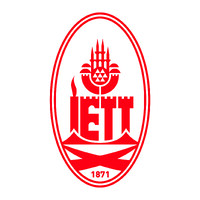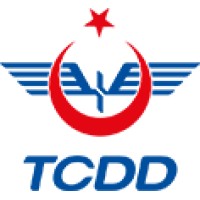
IETT Company Cyber Security Posture
iett.istanbulPublic transportation in the city of Istanbul officially started August 30, 1869, with the agreement relating to "The Tramway in Dersaadet and Its Facilities". The operation of the first horse drawn tram started in 4 lines in 1871. In the same year, the construction of the Tünel, a short funicular between Pera and Galata, started. The funicular opened to service on December 5, 1874, the second oldest subway in the world after the London underground; today it is still in service. Shift to electricity tram took place on February 2, 1914 and starting from June 8, 1928, tram operation was effective on the Anatolian side. The tram, Tünel, bus and electricity establishments, which had been operated by various foreign companies, were nationalized in 1939 and gained their current status under the name of the Directorate General of IETT Establishments. In 1945, Yedikule and Kurbağalıdere gas plants and the Istanbul and Anadolu gas distribution systems fed by these plants were taken over. As a result of the amendment in the TEK (Turkish Establishment of Electricity) law No: 2705, dated September 9, 1982, all electricity services, along with their rights and responsibilities, were granted to TEKB. In June 1993, in compliance with the orders of the Metropolitan Municipality, town gas production and distribution activities were terminated. Today İETT provides only public transportation with buses, BRT (Metrobüs) and Tunnel Operations and also responsible for management and inspection of Private Bus Transit Services.
IETT Company Details
iett
10,001+ employees
8879
221
Utilities
iett.istanbul
Scan still pending
IET_1095840
Scan started
Between 800 and 900
This score is AI-generated and less favored by cyber insurers, who prefer the TPRM score.
 IETT Global Score
IETT Global Score.png)

IETT Company Scoring based on AI Models
| Model Name | Date | Description | Current Score Difference | Score |
|---|---|---|---|---|
| AVERAGE-Industry | 03-12-2025 | This score represents the average cybersecurity rating of companies already scanned within the same industry. It provides a benchmark to compare an individual company's security posture against its industry peers. | N/A | Between 800 and 900 |
IETT Company Cyber Security News & History
| Entity | Type | Severity | Impact | Seen | Url ID | Details | View |
|---|
IETT Company Subsidiaries

Public transportation in the city of Istanbul officially started August 30, 1869, with the agreement relating to "The Tramway in Dersaadet and Its Facilities". The operation of the first horse drawn tram started in 4 lines in 1871. In the same year, the construction of the Tünel, a short funicular between Pera and Galata, started. The funicular opened to service on December 5, 1874, the second oldest subway in the world after the London underground; today it is still in service. Shift to electricity tram took place on February 2, 1914 and starting from June 8, 1928, tram operation was effective on the Anatolian side. The tram, Tünel, bus and electricity establishments, which had been operated by various foreign companies, were nationalized in 1939 and gained their current status under the name of the Directorate General of IETT Establishments. In 1945, Yedikule and Kurbağalıdere gas plants and the Istanbul and Anadolu gas distribution systems fed by these plants were taken over. As a result of the amendment in the TEK (Turkish Establishment of Electricity) law No: 2705, dated September 9, 1982, all electricity services, along with their rights and responsibilities, were granted to TEKB. In June 1993, in compliance with the orders of the Metropolitan Municipality, town gas production and distribution activities were terminated. Today İETT provides only public transportation with buses, BRT (Metrobüs) and Tunnel Operations and also responsible for management and inspection of Private Bus Transit Services.
Access Data Using Our API

Get company history
.png)
IETT Cyber Security News
Instrumentation and Control Engineering Technology
This course integrates fundamental concepts from electrical engineering and mechanical engineering to analyze, design, and control systems that involve the ...

IETT Similar Companies

Hitachi Energy
Hitachi Energy is a global technology leader that is advancing a sustainable energy future for all. We serve customers in the utility, industry and infrastructure sectors with innovative solutions and services across the value chain. Together with customers and partners, we pioneer technologies and

WBSEDCL
The Government of West Bengal has restructured the erstwhile WBSEB into two successor entities, namely West Bengal State Electricity Distribution Company Limited (WBSEDCL) and West Bengal State Electricity Transmission Company Limited (WBSETCL), under the ownership of the State Government. The two C

Enedis
Enedis est le gestionnaire du réseau public de distribution d’électricité sur 95 % du territoire français continental. Ses 38 859 collaborateurs assurent chaque jour l’exploitation, l’entretien et le développement de près de 1,3 million de kilomètres de réseau. Raccordement, mise en service, dépann

National Grid
National Grid lies at the heart of a transforming energy system. Our business areas play a vital role in connecting millions of people to the energy they use, while continually seeking ways to make the energy system clean, fair, and affordable. In the UK we own and develop the high-voltage electri

Pacific Gas and Electric Company
Pacific Gas and Electric Company, incorporated in California in 1905, is one of the largest combination natural gas and electric utilities in the United States. Based in San Francisco, the company is a subsidiary of PG&E Corporation. There are approximately 20,000 employees who carry out Pacific

TCDD
Toplam 12.803 km.lik bölge sınırları içerisinde 63 adet gar müdürlüğü, 71 adet gar şefliği, 255 adet istasyon şefliği, 395 adet durak, 194 adet sayding ve 3 adet itibat memurluğu olmak üzere toplam 981 adet gar, istasyon ve duraklarımızdan oluşan işyerlerimiz mevcuttur. 1 Bağlı Ortaklık TCDD Taşıma
What Do We Measure?
















Every week, Rankiteo analyzes billions of signals to give organizations a sharper, faster view of emerging risks. With deeper, more actionable intelligence at their fingertips, security teams can outpace threat actors, respond instantly to Zero-Day attacks, and dramatically shrink their risk exposure window.
These are some of the factors we use to calculate the overall score:
Identify exposed access points, detect misconfigured SSL certificates, and uncover vulnerabilities across the network infrastructure.
Gain visibility into the software components used within an organization to detect vulnerabilities, manage risk, and ensure supply chain security.
Monitor and manage all IT assets and their configurations to ensure accurate, real-time visibility across the company's technology environment.
Leverage real-time insights on active threats, malware campaigns, and emerging vulnerabilities to proactively defend against evolving cyberattacks.




